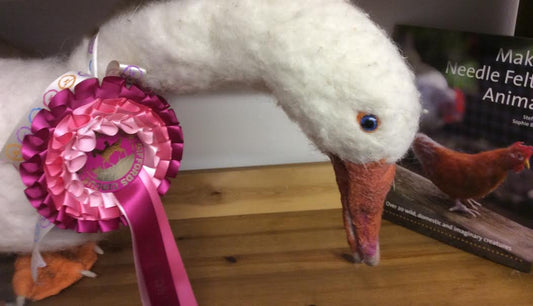News
Felting Wool: Batts / Roving / Tops / Curls
Felting Wool: An introduction to Batts, Roving, Tops, Carded, Combed, Locks, Curls Felting Wool has many names - here is a quick guide to what each means and their uses. ...
Felting Wool: Batts / Roving / Tops / Curls
Felting Wool: An introduction to Batts, Roving, Tops, Carded, Combed, Locks, Curls Felting Wool has many names - here is a quick guide to what each means and their uses. ...
A Piece of Cake or Biscuit the Cat?
You would think that having co-authored a book on how to needle felt animals would give me the skill, confidence and speed to quickly turn out a pet portrait. No...
A Piece of Cake or Biscuit the Cat?
You would think that having co-authored a book on how to needle felt animals would give me the skill, confidence and speed to quickly turn out a pet portrait. No...

Making Large Needle Felt Animals: The Goose wit...
How Brian the Goose came to be! Our Brian is a life size white goose who is a pet portrait of a real circus performing goose who belonged to a local...
Making Large Needle Felt Animals: The Goose wit...
How Brian the Goose came to be! Our Brian is a life size white goose who is a pet portrait of a real circus performing goose who belonged to a local...

